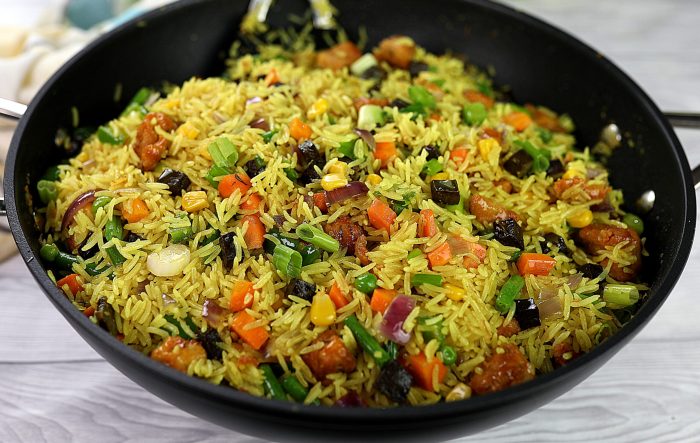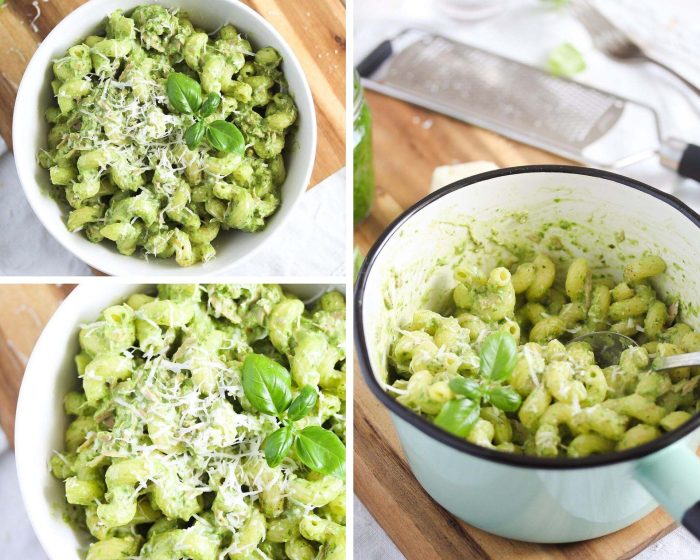Introduction
When it comes to Nigerian cuisine, rice and beans are a staple dish that is enjoyed by many. The combination of fluffy rice and flavorful beans cooked in rich spices creates a delicious and satisfying meal. In this article, we will explore how to cook rice and beans Nigerian style, including tips, techniques, and ingredients to make the perfect dish.
Ingredients
To cook rice and beans Nigerian style, you will need the following ingredients:
- 1 cup of long-grain white rice
- 1 cup of black-eyed peas
- 1 onion, chopped
- 2 cloves of garlic, minced
- 1 red bell pepper, diced
- 1 can of diced tomatoes
- 1 teaspoon of curry powder
- 1 teaspoon of thyme
- Salt and pepper to taste
- 2 cups of vegetable or chicken broth
Preparation

Before you begin cooking, it is important to prepare your ingredients. Rinse the rice and beans thoroughly under cold water to remove any debris. Chop the onion, garlic, and red bell pepper, and set aside. Drain and rinse the black-eyed peas, and then soak them in water for at least 2 hours or overnight.
Cooking Instructions
1. In a large pot, heat some oil over medium heat. Add the chopped onion and garlic, and sauté until fragrant.
2. Add the diced red bell pepper and cook for a few minutes until softened.
3. Stir in the curry powder and thyme, and cook for another minute to release the flavors.
4. Add the drained black-eyed peas, diced tomatoes, and broth to the pot. Bring to a boil, then reduce heat and simmer for about 30 minutes or until the beans are tender.
5. Stir in the rinsed rice, salt, and pepper. Cover the pot and cook for an additional 20-25 minutes, or until the rice is fluffy and fully cooked.
Hey there, wanna learn how to cook pak choi Chinese style? Check out this awesome guide on how to cook pak choi Chinese style for some tasty tips and tricks!
Serving: How To Cook Rice And Beans Nigerian Style

Once the rice and beans are cooked, fluff the rice with a fork and serve hot. This dish can be enjoyed on its own or paired with a side of plantains, salad, or fried fish. Garnish with fresh cilantro or parsley for added freshness.
Tips for Cooking Rice and Beans Nigerian Style
– Soaking the black-eyed peas helps to reduce cooking time and ensures they cook evenly.
– Adding broth instead of water enhances the flavor of the dish.
– Adjust the seasonings to your taste preferences by adding more or less curry powder, thyme, salt, and pepper.
So, you’re curious about how to cook pak choi Chinese style, huh? Well, it’s actually pretty simple! You just need some garlic, soy sauce, and a hot wok to stir-fry this delicious veggie. For a detailed step-by-step guide, check out how to cook pak choi Chinese style and impress your friends with your newfound culinary skills!
– For a spicier kick, you can add a chopped scotch bonnet pepper or hot sauce to the dish.
Conclusion
Cooking rice and beans Nigerian style is a delicious and hearty meal that is perfect for any occasion. By following these tips and instructions, you can create a flavorful dish that will transport you to the vibrant flavors of Nigeria. Enjoy this traditional dish with your family and friends, and savor the rich and comforting flavors of rice and beans.
FAQs
Q: Can I use canned beans instead of dried beans?
A: Yes, you can use canned beans for convenience, but dried beans will provide a better texture and flavor.
Q: How long does it take to cook rice and beans Nigerian style?
A: It typically takes about 1-1.5 hours to cook rice and beans Nigerian style, including soaking time for the beans.
Q: Can I use brown rice instead of white rice?
A: Yes, you can use brown rice for a healthier option, but the cooking time may be longer.
Q: Can I freeze leftover rice and beans?
A: Yes, you can freeze leftover rice and beans in an airtight container for up to 3 months. Simply reheat in the microwave or on the stovetop when ready to eat.
Q: What other ingredients can I add to rice and beans for extra flavor?
A: You can add chopped vegetables like carrots, celery, or spinach, as well as proteins like chicken, shrimp, or sausage for a twist on the traditional dish.



